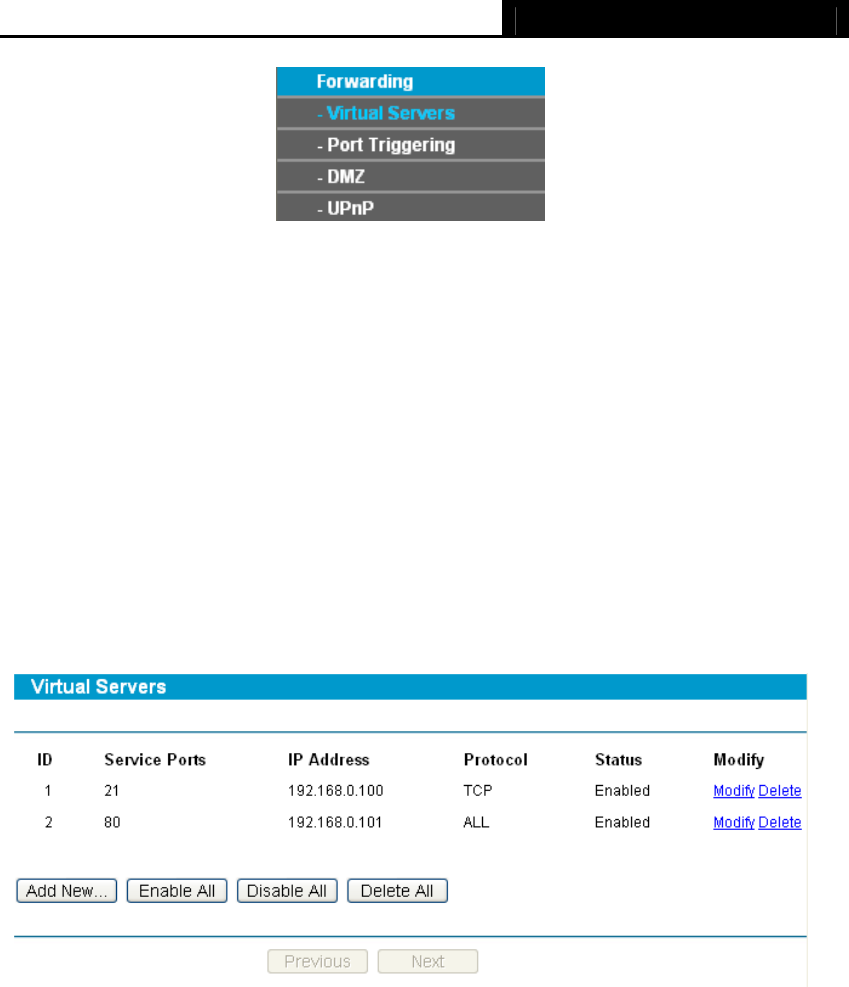
TL-R460 Cable/DSL Router User Guide
32
Figure 4-21
Click any of them, and you will be able to configure the corresponding function. The
detailed explanations for each submenu are provided below.
4.5.1 Virtual Servers
Choose menu “Forwarding→Virtual Servers”, you can view and add virtual servers on
the next screen (shown in Figure 4-22).
Virtual servers can be used for setting up public services on your LAN, such as DNS,
Email and FTP. A virtual server is defined as a service port, and all requests from Internet
to this service port will be redirected to the computer specified by the server IP. Any PC
that was configured as a virtual server must have a static or a reserved IP address
because its IP address may change when using the DHCP function.
Figure 4-22
¾ Service Port - This field displays the numbers of External Ports. It can be a service
port or a range of service ports (the format is XXX - YYY, XXX is Start port, YYY is
End port).
¾ IP Address - This field displays the IP address of the PC running the service
application.
¾ Protocol - This field displays the protocol used for this application, either TCP,
UDP, or All (all protocols supported by the router).
¾ Status - This field displays the status of the virtual server entry. Enabled means
that the entry will take effect, Disabled means that the entry will not take effect.
To add/modify a virtual server entry:
Step 1: Click Add New…/Modify shown in Figure 4-19, you will see a new screen
